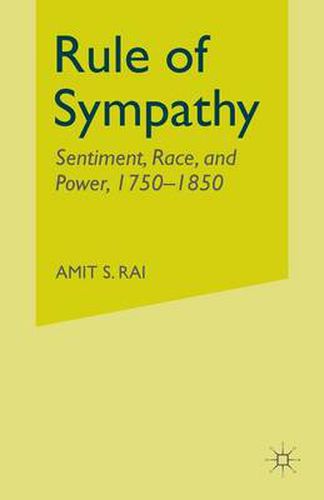Readings Newsletter
Become a Readings Member to make your shopping experience even easier.
Sign in or sign up for free!
You’re not far away from qualifying for FREE standard shipping within Australia
You’ve qualified for FREE standard shipping within Australia
The cart is loading…






This title is printed to order. This book may have been self-published. If so, we cannot guarantee the quality of the content. In the main most books will have gone through the editing process however some may not. We therefore suggest that you be aware of this before ordering this book. If in doubt check either the author or publisher’s details as we are unable to accept any returns unless they are faulty. Please contact us if you have any questions.
The Rule of Sympathy is a social and historical critique of sympathy in British discourse in the late eighteenth and early nineteenth century. Although initially associated with feminized or effeminate forms of sentimental discourse (the romance, the novel, the gothic), sympathy came to function as a key technology of gender and race in new evangelical social movements, such as abolitionism and missionizing. Amit Rai argues that sympathy was a paradoxical mode of power. The differences of racial, gender and class inequalities that increasingly divided the object and agent of sympathy were precisely what must be bridged through identification. Yet without such differences, which were differences of power, sympathy itself would be impossible. This paradoxical mode of power transformed the ways in which people came to think of how best to manage, order, and govern individuals and populations in the late eighteenth century.
$9.00 standard shipping within Australia
FREE standard shipping within Australia for orders over $100.00
Express & International shipping calculated at checkout
This title is printed to order. This book may have been self-published. If so, we cannot guarantee the quality of the content. In the main most books will have gone through the editing process however some may not. We therefore suggest that you be aware of this before ordering this book. If in doubt check either the author or publisher’s details as we are unable to accept any returns unless they are faulty. Please contact us if you have any questions.
The Rule of Sympathy is a social and historical critique of sympathy in British discourse in the late eighteenth and early nineteenth century. Although initially associated with feminized or effeminate forms of sentimental discourse (the romance, the novel, the gothic), sympathy came to function as a key technology of gender and race in new evangelical social movements, such as abolitionism and missionizing. Amit Rai argues that sympathy was a paradoxical mode of power. The differences of racial, gender and class inequalities that increasingly divided the object and agent of sympathy were precisely what must be bridged through identification. Yet without such differences, which were differences of power, sympathy itself would be impossible. This paradoxical mode of power transformed the ways in which people came to think of how best to manage, order, and govern individuals and populations in the late eighteenth century.